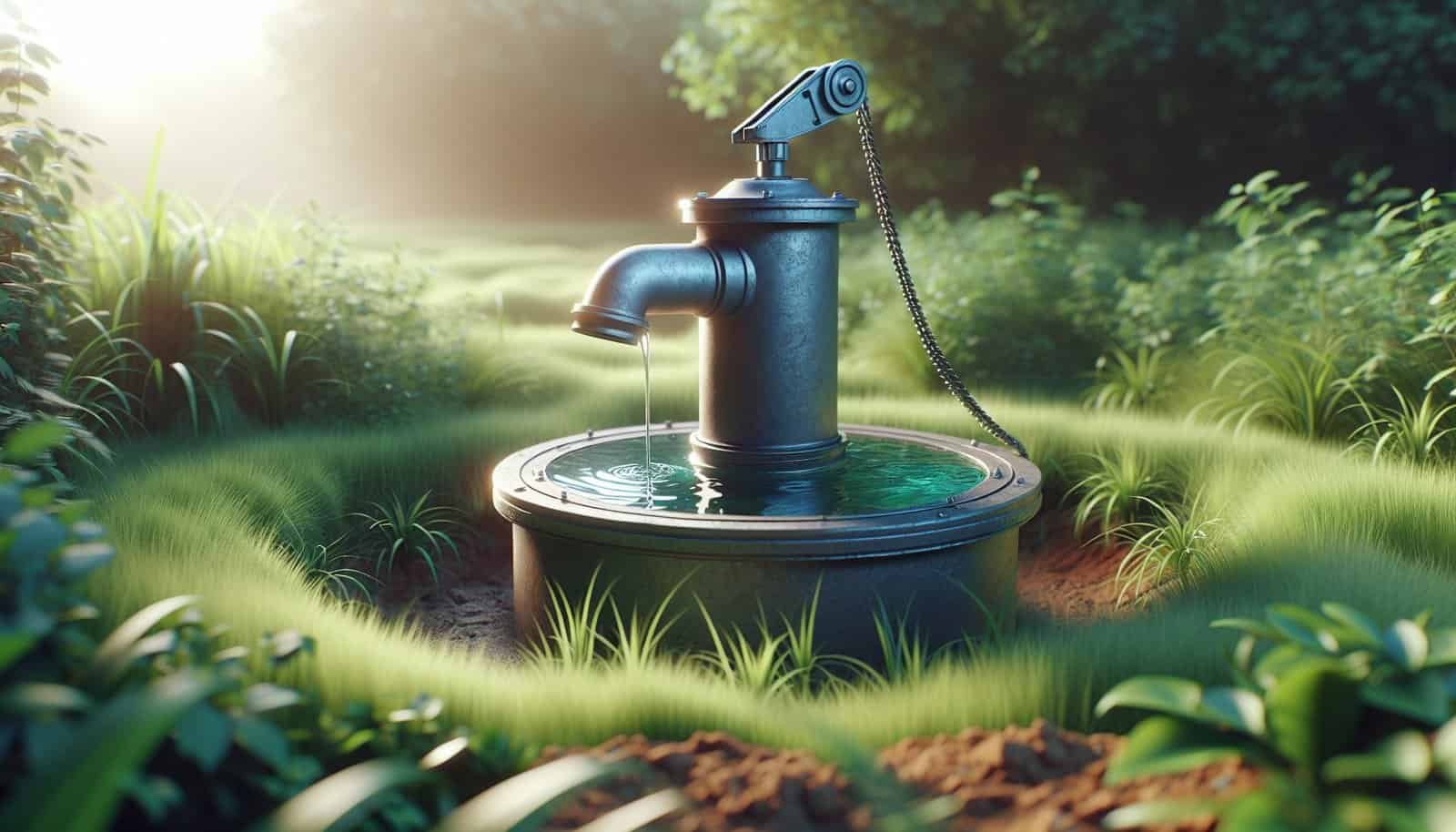Are you concerned that pesticides might be contaminating the water coming from your well?
How Can I Protect My Well From Pesticide Contamination?
You rely on your well to provide safe water for drinking, cooking, and everyday use. This guide shows practical steps you can take to reduce the risk of pesticide contamination and to respond effectively if contamination occurs.
Why pesticide contamination of wells matters
Pesticides are designed to kill or control unwanted plants and pests, and some are chemically persistent and mobile in soil and groundwater. If these chemicals reach your well, they can affect water quality and potentially cause health problems for you and your family.

How pesticides enter wells
Pesticides can reach wells through several pathways, including surface runoff, infiltration through soil, leaching to groundwater, and accidental spills near the wellhead. Understanding these entry routes helps you focus prevention and protection efforts where they will be most effective.
Surface runoff and infiltration
When it rains or when irrigation is heavy, pesticides applied to nearby fields, lawns, or gardens can be washed over the surface and carried toward low areas or wellheads. You should keep pesticide-treated areas uphill or well away from your well and use barriers or vegetation to reduce runoff.
Leaching to groundwater
Some pesticides are soluble in water and can move downward through the soil to the aquifer. The speed and distance of this movement depend on the pesticide properties, soil type, and depth to groundwater. You should consider soil testing and knowledge of your aquifer when assessing risk.
Accidental spills and direct application near wells
Spills, poor storage, or direct application of pesticides near a well can create immediate contamination risks. You must maintain secure storage and always avoid applying pesticides within an established buffer zone around the well.
Know your well and your site
You need to understand your well type, depth, construction, and the hydrogeology of your area. That knowledge helps you identify vulnerabilities and choose appropriate protections and monitoring strategies.
Identify your well type and construction details
Different wells (dug, bored, drilled, driven) have different susceptibilities to contamination. Drilled wells with properly sealed casings are usually less vulnerable than old dug wells. You should obtain your well construction report or contact the installer to get these details.
Determine depth to water and aquifer characteristics
Shallow groundwater is more susceptible to contamination from pesticides applied at the surface. You should find out how deep your water table is and what type of aquifer your well taps — confined or unconfined — because that affects contaminant transport and persistence.
Map surrounding land use
You should map nearby land uses — agricultural fields, golf courses, orchards, nurseries, or areas where pesticides are frequently applied — and note their distance, slope, and drainage patterns relative to your well. This helps you set protection priorities.

Wellhead protection and physical barriers
Protecting the immediate area around your well is one of the most effective steps you can take. Create a managed zone around the well, control surface water flow, and prevent direct contact between pesticides and well components.
Create a pesticide-free buffer zone
Establish a clear buffer zone of at least 30 meters (about 100 feet) around your well where you do not store or apply pesticides. This reduces the likelihood of spills and drift affecting the wellhead. If local slope or drainage suggests greater risk, extend the buffer.
Maintain a well pad and grade
Ensure the ground around your well is sloped away from the well to divert surface water and runoff. You should keep the area free of depressions where water can pool, and consider a gravel pad to reduce infiltration near the casing.
Secure and cap the wellhead
You should have a properly sealed, locking well cap to prevent contaminants and insects from entering the well. A damaged or missing cap is an invitation for surface contamination and should be repaired immediately.
Well construction and maintenance best practices
Proper construction and routine maintenance reduce many contamination risks and prolong well life. You should follow standards and ensure qualified professionals handle important tasks.
Proper casing and grouting
A durable casing that extends above ground and an effective grout (cement or bentonite) around the casing reduces the risk of surface contaminants bypassing protective barriers. You should verify that casing extends at least several feet above ground and that annular space is sealed.
Regular inspection and maintenance schedule
Inspect your well annually for cracks, corrosion, missing caps, or signs of surface water intrusion. You should also check seals, vent screens, and electrical components and address any problems promptly to keep the system secure.
Repair and upgrade older wells
Older wells, especially dug wells and those with deteriorated components, are more vulnerable to contamination. You should plan for upgrades or replacement if recommended by a qualified well contractor.

Monitoring and testing your well water
Testing is a critical component of protecting your well. You can’t manage what you don’t measure, and regular testing gives you early warning of contamination so you can take corrective action.
Baseline testing after installation, ownership change, or nearby pesticide application
You should test your well water when the well is first put into service, whenever you take ownership, and after any significant pesticide application nearby. This gives you a baseline to compare against future results.
Routine testing schedule
Establish a routine testing schedule based on local conditions and risk factors. At a minimum, you should test annually for general water quality and specific contaminants of concern, but you may need more frequent testing if nearby pesticide use is high or if your well is shallow.
What to test for
You should test for general indicators (total coliform bacteria, nitrates) and for pesticides used in nearby areas or those that are mobile/persistent. Work with your local health department or an environmental lab to identify priority pesticides to analyze.
Table: Suggested testing frequency based on risk level
| Risk Level | Recommended Tests | Frequency |
|---|---|---|
| Low risk (deep drilled well, rural low pesticide use) | Basic potability: bacteria, nitrates; periodic pesticide screen | Annually, pesticide screen every 3–5 years |
| Moderate risk (shallow well, some nearby pesticide use) | Bacteria, nitrates, targeted pesticide panel | Annually, pesticide screen annually |
| High risk (very shallow, adjacent to agricultural fields/orchards) | Bacteria, nitrates, full pesticide panel including metabolites | Every 3–6 months or after major application/rain events |
Interpreting results and taking action
You should compare lab results to your national or local drinking water standards or health advisories. If pesticide concentrations exceed advisory levels or you have unclear results, consult local public health authorities and consider treatment, temporary alternate water sources, or well remediation.
Proper pesticide use and storage practices
Reducing the amount of pesticide that can reach your well starts with good pesticide stewardship. You can reduce risk through careful selection, storage, and application practices.
Read labels and follow legal application requirements
You must follow label directions for application rates, timing, and buffer zones. The label is a legal document and contains application restrictions designed to protect water resources.
Store pesticides in secure, contained areas
You should store pesticides in an impervious secondary containment area away from the well, in locked cabinets or a dedicated storage shed. Secondary containment prevents spills from reaching soil and groundwater.
Mix and load pesticides away from wells
When preparing pesticide mixtures, you should choose a location far from the well and downhill from the well if possible. Use mats or bermed mixing stations to prevent spills from entering the soil.
Prevent backflow and rinsate issues
You should protect water supplies from backflow during pesticide mixing by using air gaps or certified backflow prevention devices. Properly manage rinse water and dispose of pesticide containers and rinsate according to regulations.

Land management and vegetation buffers
Using vegetation and thoughtful landscaping can intercept runoff, promote infiltration in safe areas, and absorb or transform some contaminants. You should integrate these practices into your well protection plan.
Establish vegetative buffer strips
Plant deeper-rooted grasses, native plants, or buffer strips between treated areas and your well. Vegetation decreases runoff velocity, traps sediments, and can reduce the volume of pesticides reaching the well.
Use contouring, terraces, and swales
You should direct runoff away from the well using grading, terraces, and infiltration swales located downslope from treated areas. Well-designed drainage features can decrease the pollutant load reaching the wellhead.
Maintain natural wetlands and riparian zones
Where available, natural wetlands and riparian zones act as filters and can attenuate pesticide movement toward groundwater. You should protect these ecosystems and avoid applying pesticides that could harm their function.
Treatment options if your well is contaminated
If pesticide contamination is detected in your well, various treatment technologies can reduce or remove contaminants. Your choice depends on the pesticide(s), concentration, flow rate, and budget.
Point-of-use (POU) vs point-of-entry (POE) systems
You should choose between treating water at a single faucet (POU) or treating all water entering the home (POE). POU can be cost-effective for drinking water only; POE ensures all household water meets the same standard.
Granular activated carbon (GAC) adsorption
GAC filters can be effective for many organic pesticides and their degradation products. You should note that GAC effectiveness depends on compound properties and will require periodic media replacement and monitoring.
Air stripping and advanced oxidation
Air stripping can remove volatile pesticides but is less effective for nonvolatile compounds. Advanced oxidation (UV plus oxidant) can break down some pesticides but may produce byproducts and requires careful design.
Reverse osmosis (RO)
RO systems can remove a wide range of dissolved pesticides and are suitable as POU or POE if sized correctly. You should be prepared for water waste and occasional membrane replacement.
Ion exchange and specialized adsorbents
Certain pesticides and metabolites may be treated with ion exchange resins or specialty adsorbents. You should consult a water-treatment professional to select systems tailored to specific contaminants.
Table: Common treatment options — pros and cons
| Treatment | Pros | Cons |
|---|---|---|
| Granular activated carbon (GAC) | Effective for many organics; established technology | Needs media replacement; less effective for small polar molecules |
| Reverse osmosis (RO) | High removal for many pesticides | High water waste, maintenance, cost |
| Air stripping | Good for volatile compounds | Ineffective for nonvolatile pesticides; off-gassing concerns |
| Advanced oxidation (UV + peroxide/ozone) | Can destroy resistant compounds | Complex, needs pretreatment and monitoring |
| Ion exchange | Effective for charged species | Compound-specific; resin regeneration needed |
Selecting a treatment professional
You should choose certified water-treatment professionals with experience treating pesticides and with knowledge of local water chemistry. Avoid one-size-fits-all solutions and get written performance guarantees and regular monitoring plans.

Emergency response if you suspect contamination
Quick action limits exposure and helps identify the source. You should follow clear steps to protect your household and preserve evidence for follow-up.
Immediate steps
If you suspect contamination, stop using the water for drinking and food preparation until you have test results. Use bottled water or alternate sources for drinking, cooking, and brushing teeth.
Notify authorities and document evidence
Contact your local health department or environmental agency to report contamination and get guidance. You should document dates, activities, and any nearby pesticide applications or spills that could be related.
Sample handling and chain of custody
You should use certified labs and follow chain-of-custody procedures if legal or remediation actions might follow. Proper sampling reduces uncertainty and supports any required follow-up actions.
Legal, regulatory, and financial considerations
You should be aware of local regulations for pesticide use, well construction standards, and potential funding or assistance programs for well testing and remediation.
Know local pesticide regulations and reporting requirements
Local or state pesticide agencies set application rules, buffer requirements, and reporting obligations for applicators. You should report any suspected misuse or spills to the appropriate agency.
Wellhead protection ordinances and zoning
Some jurisdictions have wellhead protection areas with special rules to limit contaminant sources. You should check local zoning codes and engage with community protection plans if applicable.
Funding and assistance programs
You may qualify for financial assistance for testing, sealing old wells, or installing treatment systems through government or non-profit programs. You should contact local health departments or rural water programs for potential help.
Working with neighbors and agricultural operators
Protecting well water often requires coordination beyond your property line. You should communicate respectfully with neighbors and local operators about practices that may affect groundwater.
Communicate proactively
Let neighboring landowners or applicators know where your well is located and request that they avoid spraying or storing pesticides within your buffer zone. You should share the risks and suggest alternatives or scheduling to reduce impact.
Participate in local watershed or wellhead protection programs
You should join or support local groups and programs focused on protecting water quality. Collective action often yields better protection than isolated efforts.
Use written agreements when necessary
If activities on neighboring properties could affect your well, consider a written agreement specifying buffer zones, application timing, and emergency notification procedures. You should consult legal advice for enforceable agreements.
Long-term prevention strategies and planning
Long-term planning strengthens your defense against pesticide contamination and improves resilience. You should integrate well protection into land-use and household decision-making.
Replace or abandon high-risk wells
If your well is old, shallow, or poorly constructed, plan for replacement or proper abandonment. You should work with licensed well contractors and follow local permitting requirements.
Implement integrated pest management (IPM) on your property
You should reduce pesticide reliance by using IPM practices: cultural controls, biological controls, targeted applications, and careful monitoring. Less pesticide use reduces overall risk to groundwater.
Maintain records and update your protection plan
Keep records of testing results, maintenance, pesticide uses, and communications with neighbors or authorities. You should review and update your well protection plan annually or when circumstances change.
Frequently asked questions (FAQ)
How close can pesticides be applied to my well?
Application distances vary by pesticide and local regulations, but a minimum buffer of 30 meters (100 feet) is a practical starting point; steeper slopes or shallow groundwater may require larger buffers. You should follow label requirements and local ordinances for exact distances.
How often should I test for pesticides?
Frequency depends on risk: annually for moderate risk and every 3–6 months for high-risk wells. You should always test after suspected contamination events or major nearby applications.
What if my water tastes or smells odd?
An unusual taste or smell can indicate contamination, but not always pesticides specifically. You should stop using the water for drinking and contact a lab for testing and your local health department for guidance.
Can boiling water remove pesticides?
Boiling does not remove many pesticides and may concentrate nonvolatile contaminants as water evaporates. You should rely on appropriate filtration or treatment technologies rather than boiling.
Are there natural treatments or home remedies?
Home remedies are not reliable for removing pesticides from drinking water. You should use certified treatment systems or seek professional advice.
Sample well protection checklist
You can use this checklist to evaluate and act on well-protection measures. Each item helps reduce risk and improve readiness.
| Action | Done (Y/N) | Notes |
|---|---|---|
| Obtain well construction report | ||
| Establish pesticide-free buffer zone (min. 30 m / 100 ft) | ||
| Grade area to slope away from well | ||
| Install secure locking well cap | ||
| Inspect well annually | ||
| Test water: bacteria & nitrates annually | ||
| Test for pesticides (baseline, then per risk) | ||
| Secure pesticide storage with secondary containment | ||
| Mix/load pesticides away from well | ||
| Plant vegetative buffer and maintain | ||
| Keep records of tests and pesticide uses | ||
| Contact local health dept for assistance |
Resources and contacts
You should keep contact information for local agencies and labs handy. They can assist with testing, technical guidance, and reporting.
- Local health department or county environmental health office: testing guidance and public health advice.
- State or provincial pesticide regulatory agency: application rules and reporting.
- Licensed well contractors and water treatment professionals: construction, remediation, and treatment systems.
- Certified environmental testing labs: for accurate pesticide analyses.
- Cooperative extension service or agricultural advisors: integrated pest management and best practices.
Final recommendations — practical steps you can take now
Start with a quick action plan: check the wellhead and cap, create or verify a buffer zone, stop any pesticide use near the well, and schedule water testing. You should prioritize actions based on risk and cost: immediate protective measures are often low-cost and significant in reducing contamination risk.
You should also develop a long-term plan that includes regular inspections, a testing schedule, and discussions with neighbors and local authorities. Protecting your well from pesticides is an ongoing effort, and proactive steps pay off in safer water and peace of mind.
If you want, provide your well type, location, and recent local pesticide activities, and you’ll get a tailored list of recommended tests, buffer sizes, and treatment options.
